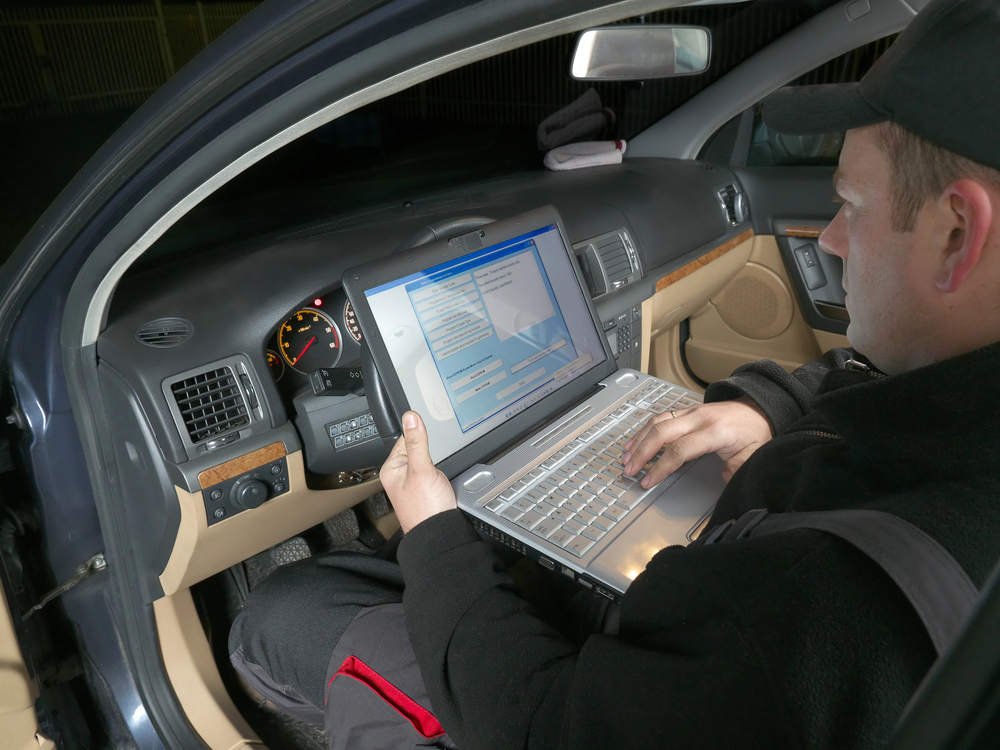In the world of automobiles, the Vehicle Identification Number (VIN) stands as a crucial element, often likened to a car’s fingerprint. Every vehicle has a unique VIN, a 17-character string that encodes essential information about the car, including its manufacturer, model, and specific details about its production. This article delves deep into the concept of VIN decoders, exploring their importance, how they work, and their applications in various fields such as buying and selling vehicles, insurance, and vehicle history reports.
The Basics of VIN
What is a VIN?
A Vehicle Identification Number (VIN) is a unique code assigned to every motor vehicle when it’s manufactured. The VIN is composed of 17 characters (digits and capital letters) that serve as a unique identifier for the vehicle. It provides specific information about the vehicle’s manufacturer, model, and year of manufacture.
History and Standardization
The VIN system was standardized in 1981 by the National Highway Traffic Safety Administration (NHTSA) in the United States. Before this standardization, VINs varied in length and format, making it difficult to track vehicles consistently. The 17-character standard ensures that each VIN is unique and can be reliably used for vehicle identification across different manufacturers and regions.
Structure of a VIN
A VIN can be broken down into several sections, each providing different pieces of information:
- World Manufacturer Identifier (WMI): The first three characters identify the vehicle’s manufacturer and country of origin.
- Vehicle Descriptor Section (VDS): Characters 4 to 9 provide information about the vehicle model, body type, restraint system, transmission type, and engine code.
- Vehicle Identifier Section (VIS): Characters 10 to 17 indicate the vehicle’s unique serial number, including the model year, assembly plant, and production sequence.
The Function of a VIN Decoder
What is a VIN Decoder?
A VIN decoder is a tool or software that translates the VIN into readable information. By inputting a VIN into a VIN decoder, users can obtain detailed information about the vehicle, including its make, model, engine type, and more. This process simplifies the understanding of the complex alphanumeric code and reveals valuable data hidden within the VIN.
How VIN Decoders Work
VIN decoders work by referencing a database of VIN information. When a VIN is entered into the decoder, the tool cross-references the VIN with its database to extract the relevant details. This process involves breaking down the VIN into its constituent parts and interpreting each segment based on standardized codes and manufacturer-specific information.
Applications of VIN Decoders
Buying and Selling Vehicles
One of the most common uses of VIN decoders is in the buying and selling of vehicles. Prospective buyers can use a VIN decoder to verify the details of a vehicle, ensuring that the seller’s claims match the actual specifications of the car. This verification process helps prevent fraud and ensures that buyers are making informed decisions.
Vehicle History Reports
VIN decoders play a crucial role in generating vehicle history reports. These reports provide comprehensive information about a vehicle’s past, including previous owners, accident history, service records, and title information. Services like Carfax and AutoCheck use VIN decoders to compile these reports, which are invaluable for buyers looking to understand a vehicle’s history before making a purchase.
Insurance and Registration
Insurance companies and government agencies also use VIN decoders to verify vehicle information for insurance policies and registration purposes. Accurate vehicle information helps determine insurance rates, verify coverage requirements, and ensure that vehicles meet regulatory standards.
Recalls and Safety Information
VIN decoders are essential tools for identifying vehicles that may be subject to recalls or safety advisories. Manufacturers and regulatory agencies use VINs to track vehicles and notify owners of potential safety issues. By decoding a VIN, vehicle owners can quickly determine if their vehicle is affected by a recall and take appropriate action.
Detailed Breakdown of a VIN
World Manufacturer Identifier (WMI)
The WMI consists of the first three characters of the VIN. It identifies the vehicle’s manufacturer and country of origin. For example:
- 1HG: Honda (manufactured in the United States)
- 2HG: Honda (manufactured in Canada)
- JHM: Honda (manufactured in Japan)
Each character in the WMI has a specific meaning:
- The first character represents the country of origin.
- The second character denotes the manufacturer.
- The third character indicates the vehicle type or manufacturing division.
Vehicle Descriptor Section (VDS)
The VDS includes characters 4 to 9 and provides detailed information about the vehicle’s attributes. This section can vary significantly between manufacturers but generally includes data on the following:
- Model: The specific model of the vehicle.
- Body Type: The style of the vehicle’s body (e.g., sedan, SUV).
- Restraint System: Information about the vehicle’s seat belts and airbags.
- Transmission Type: Whether the vehicle has an automatic or manual transmission.
- Engine Code: Specifics about the engine type and size.
Vehicle Identifier Section (VIS)
The VIS, comprising characters 10 to 17, provides unique identification for each vehicle. It includes:
- Model Year (10th Character): Indicates the year the vehicle was manufactured. For example, ‘A’ represents 2010, ‘B’ represents 2011, and so on.
- Assembly Plant (11th Character): Identifies the plant where the vehicle was assembled.
- Serial Number (12th to 17th Characters): A unique sequence assigned to each vehicle, ensuring that no two vehicles have the same VIN.
The Importance of Accurate VIN Decoding
Preventing Fraud
Accurate VIN decoding helps prevent various types of fraud in the automotive industry. By verifying the details encoded in the VIN, buyers can ensure that the vehicle they are purchasing matches the seller’s description. This verification is crucial for detecting cases where VINs have been tampered with or vehicles have been misrepresented.
Enhancing Safety
Knowing the exact details of a vehicle through its VIN can enhance safety. For instance, understanding the vehicle’s restraint systems and engine specifications can help in assessing the car’s safety features. Additionally, VIN decoding can reveal whether a vehicle is subject to any recalls, ensuring that necessary repairs are made to maintain safety standards.
Streamlining Insurance and Registration
For insurance companies and registration authorities, accurate VIN decoding is essential for determining the correct insurance premiums and ensuring that vehicles comply with regulatory standards. Misidentifying a vehicle’s specifications can lead to incorrect insurance rates and registration issues, which can be avoided with precise VIN decoding.
Advanced Uses of VIN Decoders
Customizing and Upgrading Vehicles
For car enthusiasts and professionals looking to customize or upgrade vehicles, VIN decoders provide critical information about the car’s original specifications. This data is essential for selecting compatible parts and making informed decisions about modifications.
Fleet Management
In fleet management, VIN decoders play a significant role in tracking and managing a large number of vehicles. Fleet managers can use VIN decoding to maintain accurate records, schedule maintenance, and ensure compliance with safety regulations.
Legal and Forensic Applications
In legal and forensic contexts, VIN decoders are invaluable tools for investigating vehicle-related crimes. Law enforcement agencies use VIN decoding to track stolen vehicles, identify vehicles involved in accidents or crimes, and verify ownership records.
Challenges and Limitations of VIN Decoding
Variations Between Manufacturers
One of the challenges of VIN decoding is the variation in coding standards between different manufacturers. While the basic structure of a VIN is standardized, the specific codes used in the VDS and VIS sections can differ significantly. This variation requires VIN decoders to maintain extensive databases and update them regularly to ensure accuracy.
Incomplete or Inaccurate Data
Another limitation is the potential for incomplete or inaccurate data. If a VIN decoder’s database is not up-to-date or lacks information about certain models, the decoding process may yield incomplete results. Users must rely on reputable VIN decoding services to obtain the most accurate information.
Privacy Concerns
There are also privacy concerns related to the use of VIN decoders. The information revealed through VIN decoding can include sensitive details about a vehicle’s history, which may be misused if accessed by unauthorized individuals. Ensuring that VIN decoding services adhere to privacy regulations and protect user data is crucial.
Choosing the Right VIN Decoder
Factors to Consider
When selecting a VIN decoder, consider the following factors:
- Database Accuracy: Ensure that the VIN decoder has access to a comprehensive and regularly updated database of vehicle information.
- User Interface: A user-friendly interface makes it easy to input VINs and interpret the results.
- Additional Features: Some VIN decoders offer additional features such as vehicle history reports, recall information, and market value estimates.
- Reputation: Choose a VIN decoder from a reputable provider with positive user reviews and industry recognition.
Popular VIN Decoding Services
Several popular VIN decoding services offer reliable and detailed vehicle information:
- Carfax: Known for its comprehensive vehicle history reports, Carfax provides detailed information based on VIN decoding.
- AutoCheck: Offers vehicle history reports with a focus on auction and insurance data.
- VINCheckPro: Provides free VIN decoding and vehicle history reports with an emphasis on safety recall information.
- NHTSA VIN Decoder: A free tool provided by the National Highway Traffic Safety Administration for basic VIN decoding and recall information.
The Vehicle Identification Number (VIN) is a powerful tool for identifying and understanding the specifics of any motor vehicle. VIN decoders simplify the complex information encoded in the VIN, making it accessible and useful for a variety of applications. From preventing fraud and enhancing safety to streamlining insurance and registration processes, VIN decoders play a crucial role in the automotive industry. By understanding how VIN decoders work and choosing the right one, users can unlock valuable information about their vehicles and make informed decisions. Whether you’re buying a car, managing a fleet, or ensuring compliance with safety regulations, a reliable VIN decoder is an indispensable resource.










My beemer was nicked last week. They chopped it up and sold the parts on eBay. I found a few bits on sale and contacted the police but they said they could do nuffing about it. Wot a bunch of c–nts.
My car was stolen last year in August. We tracked it down to Nigeria lat week.